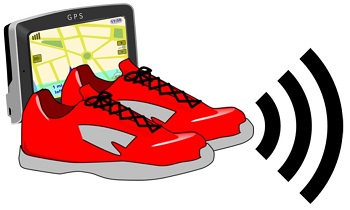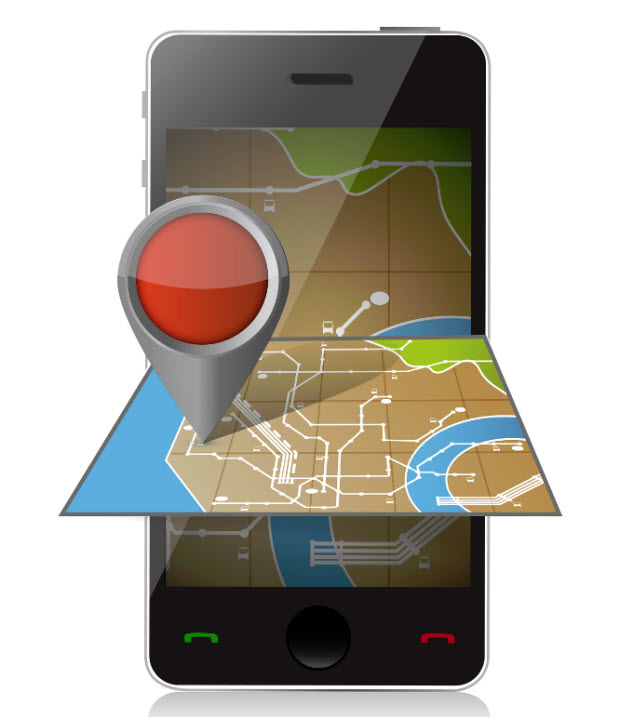Denny |
September 5, 2014
As smartwatches rise in popularity partly for use as a fitness tool, there is now footwear designed to do the same.
A company from India has now entered the wearable technology market not with the typical fitness band or smartwatch device, but with a pair of shoes that are enabled with GPS tech to help to provide wearers with directions.
These red sports shoes will become available for purchase later on in September.
Consumers interested in purchasing this wearable technology will need to look for vibrant red sneakers called LeChal, which is a Hindi term that means “take me along”. Aside from providing directions to the wearer through its GPS, these shoes also work as a pedometer, counting steps, and will estimate the number of calories that are burned by a workout or in a given day.
This wearable technology also includes a Bluetooth transceiver that is detachable from the shoes.
 The Bluetooth feature on these wearables allows the shoes to connect to a smartphone app that uses Google Maps. This way, the wearer can receive indications as to whether he or she should turn left or right. The shoes vibrate to signal to the wearer that he or she should turn in one way or the other.
The Bluetooth feature on these wearables allows the shoes to connect to a smartphone app that uses Google Maps. This way, the wearer can receive indications as to whether he or she should turn left or right. The shoes vibrate to signal to the wearer that he or she should turn in one way or the other.
The LeChal shoes are the creation of Anirudh Sharma, 28 and Krispian Lawrence, 30. These are two engineering graduates who began their startup company, Ducere, back in 2011. It has experienced rapid growth and is now the employer of 50 people. The company decided to stay away from the typical wearables that currently look like devices out of science fiction films. Instead, they chose to create a product that looks just like something that people are already choosing to wear, so that fashion and function could be combined in a more subtle way.
While it may not be outfitted with all of the various functions that are contained within the standard smartwatch found in today’s wearable technology marketplace, it still contains some useful features that are practical for the purposes of the wearers of this type of product. Moreover it does not result in the obligation of the wearer to add a new element to his or her fashions, particularly in terms of what is worn during workouts.
Geolocation technology using searches and advertising are taking off in the country, says TechNavio.
A technology focused global research firm called TechNavio Research has now released a report that has shown that the increasing penetration of smartphones and other mobile devices has fueled a considerable growth in the American location based marketing and search market.
The firm has forecasted that from last year through 2018, there will be a compound annual growth rate (CAGR) of 43.01.
Location based marketing uses a mobile device owner’s specific position – as reported by that device – to promote brands, products and services that are in close proximity to that individual. Over the last few years, it has increasingly become the standard for smartphones and tablets to be GPS enabled, and those devices are achieving greater popularity among consumers. In the United States, it was reported, last year, that there was a 65 percent penetration rate for smartphones that were enabled with GPS technology.
It is expected that by 2016, over 90 percent of devices will be capable of supporting location based marketing tech.
According to the TechNavio vice president, Faisal Ghaus, “The huge number of smartphones being used in the US acts as a catalyst for the incremental adoption of mobile LBS applications such as location discovering, friend finder and location-based advertising, shopping and networking.”
Companies have recognized that there is potential value in providing consumers with advertising that is based on their specific location and have been increasingly adopting location based services in order to appeal to those shoppers.
Among the large businesses currently testing campaigns that employ this technology are PepsiCo Inc., Starbucks Corp. , and L’Oreal Inc. The latter of those companies has already launched a pilot campaign to test the cost effectiveness of this technology when compared to other electronic media as well as traditional print advertising.
Ghaus pointed out that as location based marketing costs are relatively low when compared to many other forms of advertising, “enterprises are witnessing cost benefits from related marketing activities and transferring these benefits to their customers.” This can also assist businesses in better understanding their customers so that more relevant and attractive deals can be offered.
 The Bluetooth feature on these wearables allows the shoes to connect to a smartphone app that uses Google Maps. This way, the wearer can receive indications as to whether he or she should turn left or right. The shoes vibrate to signal to the wearer that he or she should turn in one way or the other.
The Bluetooth feature on these wearables allows the shoes to connect to a smartphone app that uses Google Maps. This way, the wearer can receive indications as to whether he or she should turn left or right. The shoes vibrate to signal to the wearer that he or she should turn in one way or the other.

